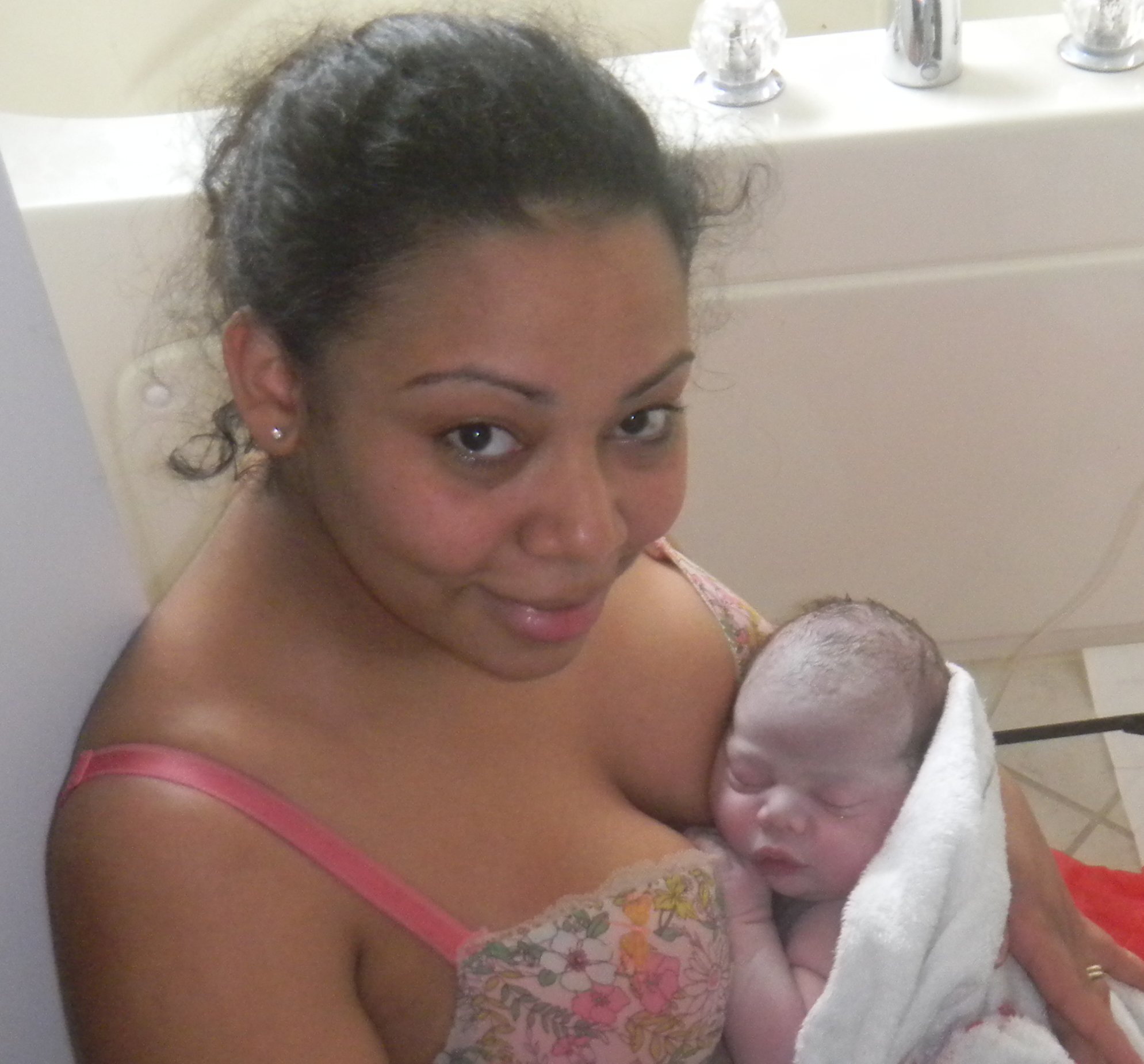Skin changes in pregnancy can be a nuisance, but there are a number of home remedies available to alleviate discomfort and improve appearance. But, it begins with embracing all the normal changes as beautiful marks of blessing, wisdom and transformation to not only appreciate but also to celebrate.
The hormones in pregnancy cause a variety of skin changes, such as:
Darkening of your nipples and areola
Darkening of existing moles, freckles and birthmarks
The development of dark patches on the face
A dark line in the center of the abdomen
Stretch marks
Red palms
Spider veins
Dryness
Sweating
Itching
Increased sensitivity to irritants
Skin Discoloration
To minimize skin discoloration, avoid tanning salons and excessive sun exposure, especially between 10 am and 2 pm. During these peak hours, apply low dose natural sunscreen containing an SPF of at least 15-30. Protect yourself with a big brimmed hat and light clothing as needed.
Make sure you eat foods high in folate, such as whole grains, fresh fruits, vegetables, and liver. Alternately, you can take a prenatal herbal supplement that provides 1 mg methylated folic acid which has other benefits as well, like prevention of fetal neural tube defects. It also comes in chewable form.
Avoid hydrocortisone cream and coal tar preparations.
Red palms may be caused by a deficiency in vitamin B6 which is unlikely if your diet is healthy and well-balanced, as B6 is found in fresh fruits and vegetables, whole grains and protein foods, as well as in prenatal vitamins.
Consult your dermatologist if a mole develops changes other than simply darkening, such as becoming larger, irregular, discolored, or irritated.
Stretch Marks
Stretch marks are made worse by increased weight gain and skin stretching, like with large babies or twins. If you have a tendency to develop stretch marks, you can help to prevent or minimize them with a regular massage to the vulnerable areas with equal amounts of the essential oils of argan, bitter almond, gotu kola, pomegranate, lavender, bitter orange, rosehip, vitamin E and dragon's blood extract sap diluted in a container of almond, coconut and/or wheat germ oils.
Try experimenting with creams said to help, such as those containing cocoa butter or shea butter, elastin, vitamin E and any of the above essential oils. Massage them slowly into your body with love and honor for your goddess self, looking for and admiring the beauty inside and out. Take time to breathe in a sense of deep gratitude for the blessings in your life, including the ability to bring a new baby into your family.
Wear a supportive bra and a good maternity girdle, and watch your weight. Remember, you only need to gain 3-6 pounds during the 1st trimester and ½ -1 pound per week for the remainder of your pregnancy, for a grand total of 25-35 pounds.
Get 30 minutes 5 days per week of moderate exercise like brisk walking, dancing, swimming, cycling, and low impact aerobics, as well as muscle toning through floor work exercises, light weights, Pilates and/or prenatal yoga.
Drink 8-10 glasses of water daily. And eat lots of fresh vegetables, fruits, whole grains, beans, nuts, seeds, and lean protein (like organic eggs, tofu, wild clean water fish, turkey or chicken), and use olive or coconut as your primary oil. Avoid products high in refined white flour, sugars and saturated or partially hydrogenated fat.
Be sure to supplement your diet with prenatal vitamins, minerals, essential fatty acids and other nutrients needed to sustain a healthy pregnancy.
You can also try homeopathic remedies called Calcarea fluorica, Graphites and/or Silicea to prevent stretch marks. It is usually given in low doses, several pellets of the remedy most specific to your symptoms a few times daily. Homeopathic remedies are safe and amazingly effective in treating common skin issues during pregnancy. You can consult a classical homeopath, or refer to books like Homeopathy For Pregnancy, Birth and Your Baby’s First Year by Miranda Castro.
Most skin changes resolve during the early postpartum months, but stretch marks are often referred to as one’s mark of motherhood since they never completely disappear. Try to think of them as reminders of the gifts that have been bestowed upon you, to be thankful and appreciative of your ability to bear children. Try to see the beauty in a pregnant belly. As one wise African midwife once remarked at a midwifery conference, there are many infertile women who would do anything just to have those stretch marks.
Renowned holistic MD, midwife and herbalist, Aviva Romm, in “The Natural Pregnancy Book” views stretch marks as “silvery jewelry on the belly of a woman adorning her and reflecting her ability to grow and change.” She further states that contrary to the values of American society, we need to “take pride in our individual form, shape and markings…to love ourselves with awe and admiration at the amazing accommodation your body is giving to your growing baby.”
Rashes and Itching
If you develop a local itchy rash, it may be the result of a mild allergy to something that never bothered you before. You need to experiment by paying attention to everything that comes in contact with the affected area of your skin. Eliminate possible culprits one at a time. Common causes include:
Bath soap
Laundry detergent
Synthetic cleaning soaps
Household and workplace chemicals
Environmental toxins
Synthetic clothing
Cosmetics
Metal on watches and jewelry
Poison ivy or poison oak
Certain foods (like cow dairy, gluten, soy, certain fruits, nuts, or chemical additives)
Watch for improvement after switching to all-natural hypoallergenic products available at most health food stores, wearing only cotton close to your skin, putting the laundry through an extra rinse, taking off your metal, gardening with gloves and protective clothing and avoiding these plants altogether, or cutting out a specific food item for a few days.
Try to avoid scratching as this makes the rash worse. If your skin is irritated, take a hot or cool water bath as often as you need and add a packet or ½ cup of Aveeno colloidal oatmeal or cornstarch to the water. Once your skin is completely dry, apply aloe vera gel, a few drops of lavender oil or calendula salve, or herbal combination lotion or cream to the affected areas. Ointments or creams containing Tigar Balm, Ben Gay, or Vitamins A, E, and C may also help, as well as a homeopathic remedy specific to your symptoms. If you do touch the poison ivy or oak plant again, you have 20-30 minutes to wash the oil off with soap and water, or up to 24 hours to wash it off with Tecnu lotion or Zanfel, which is more effective.
Most of the supplements and herbal remedies I recommend are available on my customized online holistic apothecary. Find the best supplements that have gone through my thorough screening process there. Look in the category for skin changes or search them individually. My online dispensary is a convenient way for you to purchase my hand-picked, professional-grade, whole food supplements and other natural health products. Ordering is simple, and the products will be shipped directly to your home or work within a few days.
For itching skin without a rash, make sure your diet is high in organic whole foods, with plenty of fresh fruits and veggies, whole grains, nuts, seeds and beans. Minimize processed, refined, chemical laden, and deep fried foods. Drink at least a half gallon of water daily.
Keep cool with loose comfortable all-cotton clothing. Try soaking in a hot or cool oatmeal or cornstarch bath, and apply calendula oil or rub cocoa butter on the itchy part of your body. Prevent skin dryness with almond or coconut oil. You can add to the oil a few drops each of the above mentioned essential oils of lavender, rosehip, bitter orange and pomegranate.
Try aqueous cream with aloe vera and/or collagen, and consult your homeopath for a remedy specific to your individual symptoms. Supplement with 1000-1500 mg evening primrose oil and 400-600 mg DHA/EPA essential fatty acids commonly found in fish oil tested free of common pollutants.
A wonderfully effective herb that helps with generalized itching and is one of the finest nourishing tonics in pregnancy is stinging nettles. You can make your own tea by adding a handful of the dried herb to 1 quart of boiling water. Steep covered in a mason glass canning jar for 4-8 hours and drink several times daily. Or, you can take 1-2 of Gaia’s or Eclectic Institute’s capsules of freeze dried extract every 2-4 hours as needed.
Another effective remedy recommended by Dr. Aviva Romm in “The Natural Pregnancy Book”, is made by combing ¼ -½ ounce each of bulk echinacea root, burdock root, licorice root (only if blood pressure is normal, and not high) and dandelion root. Steep in 1 quart boiling water for 4 hours, strain and drink ½ cup twice daily until condition improves. You can try adding lemon or lime juice, fresh mint, and or honey to taste.
Women who suffer from chronic allergic skin complaints often find that they clear up in pregnancy, but occasionally they do get worse.
If you have eczema that is not improving, try eliminating all cow’s milk and gluten products from your diet for 2 weeks to see if that helps. If you see improvement, resume dairy or one grain at a time for 2 days and note if the symptoms recur. If so, you will need to avoid that food completely. But, if they do not recur, then you can safely eat that particular food item. Other common allergen triggers to experiment eliminating and resuming one at a time include soy, corn, eggs, and yeast.
Increase intake of other foods high in calcium (like dark green leafy vegetables, sesame seed dip/tahini, wild clean water salmon and sardines) or take supplemental 500 mg Calcium Citrate with Magnesium 2-3 times per day. Cook with fresh turmeric and ginger. Dr Andrew Weil recommends taking 500 mg evening primrose or black currant oil twice daily, and applying chaparral salve or aloe vera gel to the affected areas when skin is still moist after bathing.
Reduce inner stress and increase inner calm with regular practice of yoga, meditation and breathwork, and do what you can to reduce stressors in your life. This includes unplugging from your smartphone and computer as much as possible to connect more with life, yourself and others, and doing what you really love. Doing this is probably the most important remedy, as the mind and body are exquisitely connected, and inside stress is a major cause of health problems, especially chronic allergic skin issues.
If you have psoriasis that is not improving, increase sunlight exposure to affected areas. Weather permitting, spend at least 20 minutes in the early morning or late afternoon sun. Take 2 Tbsp ground flaxseed daily. You can add to hot or cold cereals, baked goods, smoothies or yogurt.
Apply topical applications of aloe vera or chaparral lotions or salves, take a good prenatal multivitamin and mineral supplement (like New Chapter or Innate Response) with omega threes. Dr. Weil advises additional antioxidants that include:
10,000-20,000 IU mixed carotenoids (a safe source of Vitamin A)
400-800 IU Vitamin E
200 mg Vitamin C
100-200 mcg selenium
60 mg coenzyme Q10 softgel capsules
And you can try 2 capsules of Gaia, Wish Garden or Eclectic Institute’s Milk Thistle twice per day if needed. Allow at least 3 months for optimal effects.
For both psoriasis and eczema, explore wonderfully effective alternative modalities such as hypnotherapy, visualization, breathwork and guided imagery therapy, and traditional Chinese medicine and acupuncture. Read Dr. Andrew Weil’s Natural Health, Natural Medicine, which provides information on improving nutritional habits and practical ways in which you can reduce inflammation, as well as internal tension, and enhance your own health and well-being safely and naturally.
Increased Sweating
If you perspire a lot, make sure you replace fluids by drinking extra water. Bathe or shower 1-2 times daily as needed. Wear all-natural roll on deodorant from the health food store or just use plain alcohol, scented as you wish with a few drops of your favorite essential oil. Avoid antiperspirants, as you do not want to interfere with the sweating your body needs to do.
Sweating is made worse by being overweight, as well as over dressing and wearing clothing made from synthetic material like nylon and polyester instead of cotton. Dress in layers of loose cotton clothing, and eliminate coffee and other sources of caffeine from your diet.
Slippery elm bark powder or marshmallow root powder can be your applied creases, to reduce chafing or rashes from heat or increased sweating.
Consult your provider if your skin changes become severe or associated with other unusual symptoms not related to pregnancy. For instance:
Your rash is spreading all over your body
General itching without a rash, especially on your palms and soles
You have a sudden appearance of hives and your throat feels constricted
You develop a fever, chills and/or muscle aches
The above mentioned suggestions do not help and your symptoms persist or worsen
Many of these changes respond well to homeopathy, especially if they bother you. Seek out a classical homeopath, who can prescribe a homeopathic remedy specific to your individual symptoms.
For those with any sort of chronic frequent skin problems, from acne to eczema and psoriasis, to hives and allergic rashes, in which serious causes have been ruled out and none of the natural and allopathic remedies help, consider reading the book The Mindbody Prescription By Dr John Sarno, MD. He’s an amazing pioneering physician whose brilliant approach has helped hundreds of thousands of people without drugs, physical measure or surgery. Also schedule several Clarity Breathwork sessions to clear inner repressed stress, trauma, anger and grief from your body and increase your inner calm and joy. Check out Brandon Bays’ book The Journey, and her intensive workshops for extremely effective mindbody cutting edge methods that have also lead to transformational healing for thousands of people around the world.
If you need more personalized guidance, you can make an online or in person appointment with me. I am happy to help.
Check out my number one international best selling book Natural Birth Secrets and my Love Your Birth course - an online version of how I have helped thousands in my local practice.
Both resources are unique, but each provide an in depth, one-of-a-kind holistic approach created by me, a seasoned nurse midwife of over two decades, who has seen everything!
It is now recommended by midwives, physicians, health care professionals around the globe, and doulas take it for their certification training.








































